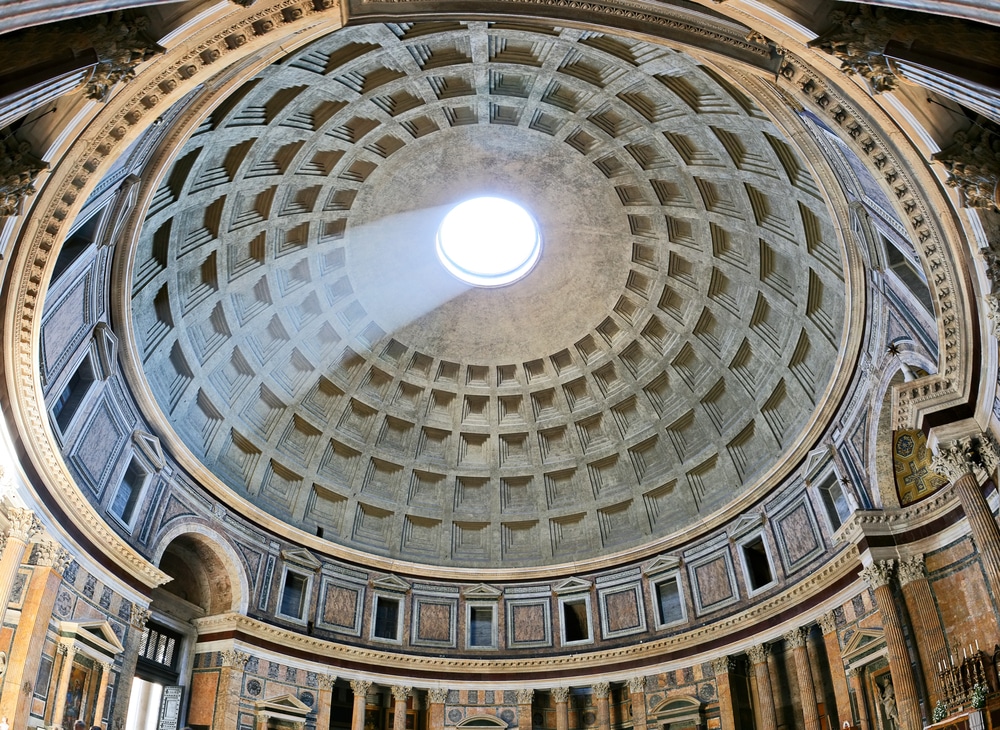Durability

Pantheon Dome, Rome, completed in 126AD
Concrete has been recorded in use as long ago as 7,000BC. It was used by the ancient Egyptians and the Romans to build the Colosseum and Hadrian’s Wall. In Ireland, there is a tradition of using durable materials such as concrete and stone which are long lasting and maintenance free. Because we live on an island we are exposed to wind and rain and this is reflected in how we build. Therefore by using durable materials we can avoid problems which can greatly reduce the life of a building.
The durability of concrete may be defined as the ability of concrete to resist weathering action, chemical attack, and abrasion while maintaining its desired engineering properties. Concrete is made to last. It can withstand major shocks, absorb sound, and regulate temperatures. Concrete buildings can have a minimum service life of 50 years, but may remain serviceable for hundreds of years, if properly maintained. Concrete’s long life means that is more likely that a concrete building will come to the end of its life because no further use can be found for it, rather than a case of the concrete having failed due to age. Even in these cases, demolition is not always the automatic course of action. Structures can often be stripped back to their concrete core, then rebuilt to new, contemporary specifications.
The durability and resilience of concrete makes it ideal for constructing buildings that demand high safety levels. For example, nuclear power plants and hydroelectric dams are constructed almost entirely of concrete. Concrete has properties that will be required to address extreme weather linked to climate change, such as rising sea levels and storms. Concrete has unsurpassed and proven fire and moisture resistance properties. It does not rot, burn, melt or rust and retains its structural stability at high temperatures.
